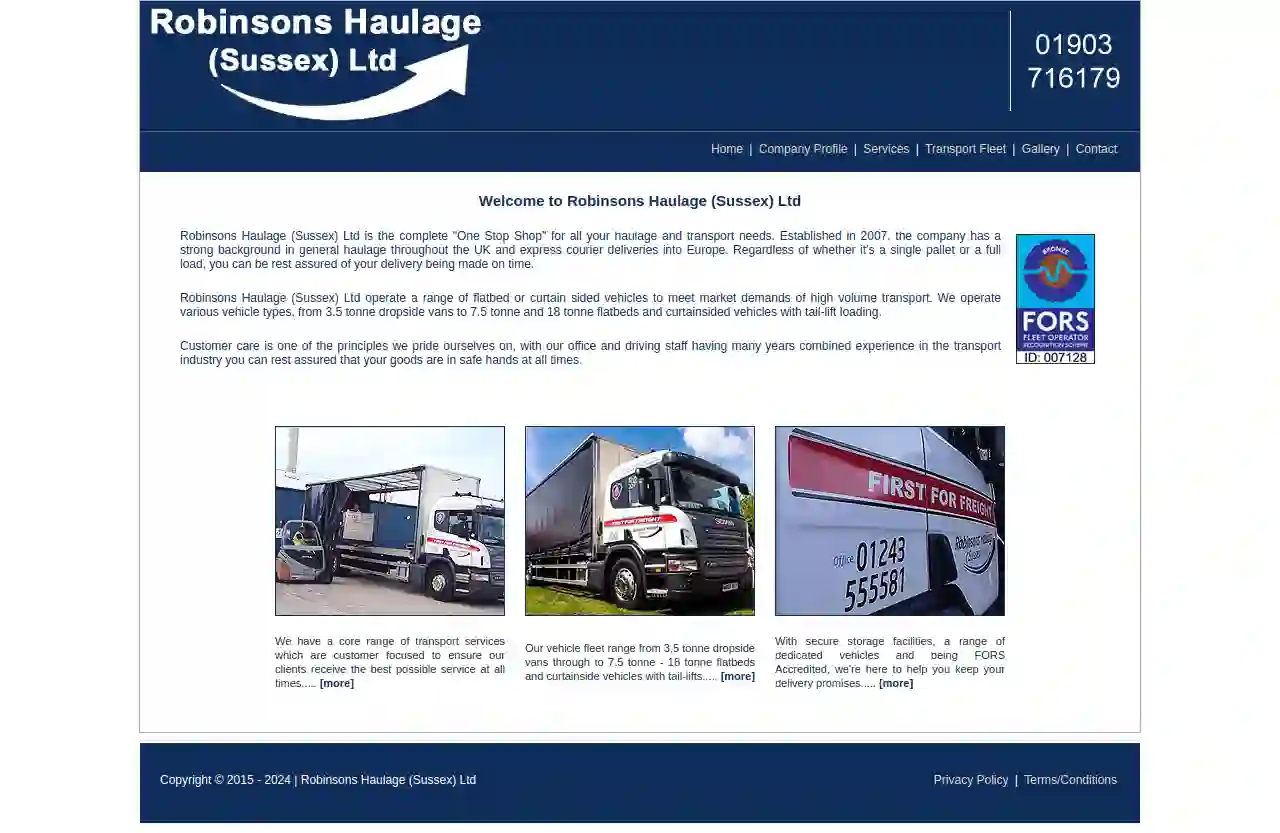Excavation Contractors Bognor Regis
Find the best Excavation Companies in Bognor Regis
Receive up to 3 Excavation Services quotes for your project today! Compare profiles, reviews, accreditations, portfolio, etc... and choose the best deal.

Dancy Building Contractors Limited
55 reviewsUnit 1, The Old Dairy, Steyning, BN44 3DZ, GBDancy Building Contractors: Modern Building, Traditional Values Dancy Building Contractors is a reputable and experienced building company based in Steyning, West Sussex. We are committed to delivering high-quality building services with a focus on traditional values and modern construction techniques. Our team of skilled professionals is dedicated to providing exceptional craftsmanship and customer service, ensuring your project is completed to the highest standards. We understand that building projects can be complex and require careful planning and execution. That's why we take a collaborative approach, working closely with our clients to understand their needs and vision. We provide clear communication, transparent pricing, and a commitment to delivering projects on time and within budget. Whether you're planning a home extension, loft conversion, or a complete new build, Dancy Building Contractors has the expertise and experience to handle your project with confidence. We are proud of our reputation for quality, reliability, and customer satisfaction. Contact us today to discuss your building project and let us help you bring your vision to life.
- Services
- Why Us?
- Gallery
Get Quote- DT
DT Hill Construction Ltd
1Horsham, GB- Services
- Why Us?
Get Quote 
Robinsons Haulage Sussex Ltd
4.913 reviewsArea 3, Bairds Business Park, Hobbs New Barn, Bairds Business Park Hobbs New Barn Gravetts Lane, Climping West Sussex, Climping, BN17 5RX, GBAbout Robinsons Haulage (Sussex) Ltd Robinsons Haulage (Sussex) Ltd is a well-established haulage and transport company, founded in 2007. We've built a strong reputation for providing reliable and efficient services throughout the UK and Europe. Whether you need to move a single pallet or a full load, you can trust us to deliver on time and with the utmost care. We've grown from a single 3.5 tonne van to a fleet of vehicles ranging from 3.5 tonne dropside vans to 7.5 tonne and 18 tonne flatbeds and curtainsided vehicles with tail-lift loading. This allows us to cater to a wide range of transport needs, ensuring we have the right vehicle for every job. Customer satisfaction is at the heart of everything we do. Our team, with years of combined experience in the transport industry, is dedicated to providing exceptional service. We take pride in our commitment to safety and security, ensuring your goods are in safe hands at all times. We're proud to be FORS (Bronze) Accredited, demonstrating our commitment to safety, efficiency, and environmental responsibility. Our experienced and well-trained staff are committed to providing our clients with the highest level of service, keeping them informed every step of the way.
- Services
- Why Us?
- Accreditations
- Gallery
Get Quote- Th
The Sussex Group
1Worthing, GB- Services
- Why Us?
Get Quote 
Arundels Construction
54 reviews13 The Cape, Littlehampton, West Sussex, BN17 6PL, GBArundels Construction Ltd Based in West Sussex, Arundels Construction Ltd has built a lasting reputation as a company of general and new home builders. With high-end services and an attractive pricing policy that can’t be beaten by any of our competitors, we transform properties in Bognor Regis, Chichester, Worthing and locations across the surrounding areas. About Arundel Builders With a sizeable portfolio of repeat customers who trust our general and new home builders completely, Arundels Construction Ltd will deliver a stress-free project to exceed your expectations. The procurement of quality materials from a trusted supplier network, coupled with our ability to take on installation and electrical work, has seen our company build a first-class reputation for its standards of workmanship and approach to superior customer service. We carry the required liability insurances, offer guarantees of between 15 and 25 years on our completed work, and have a perfect “10” rating on the Checkatrade website where our own customers review our projects. What Sets Us Apart Where we differ from other builders is in our ability to manage a project from the design stage all the way through to completion. Arundels Construction Ltd can include architectural work, engineering calculations and private building inspections in your package, which we adapt to your personal requirements.
- Services
- Why Us?
- Testimonials
- Gallery
Get Quote
Horsham Landscaping Specialists
551 reviewsHorsham, GBAbout Us Horsham Landscaping Specialists was founded by our owner, James. With over a decade of experience in the industry, James possesses a deep passion and keen eye for detail when it comes to garden design and construction. Our entire company is built upon a team with a strong work ethic and a shared passion for landscaping, always striving to deliver the highest quality results. This dedication has fueled our rapid growth, allowing us to assemble a team of dedicated landscapers serving both residential and commercial clients across the UK. Based in the Surrey Hills, Horsham, we proudly serve customers in the local and surrounding areas, including Crawley, Haywards Heath, Kilwood Vale, Billingshurst, Gatwick, London, Brighton, and Worthing. We undertake all aspects of hard landscaping, including retaining walls, patios, driveways (block, loose stone, resin), decking, and specialize in artificial grass.
- Services
- Why Us?
- Our Team
- Testimonials
- Gallery
Get Quote- CA
CARR Contractors Ltd
1Worthing, GB- Services
- Why Us?
Get Quote - JS
JS Groundworks
52 reviewsWorthing, GB- Services
- Why Us?
Get Quote - Gn
Gn Groundworks
51 reviewsWorthing, GB- Services
- Why Us?
Get Quote 
Ayling Groundworks & Plant Hire
51 reviewsThe Studio Office, Magnolias, Church Lane, Yapton, Arundel, West Sussex, BN18 0EH, GBAyling Groundworks: Your Trusted Partner for Groundworks and Civil Engineering Ayling Groundworks, established in 2012 and based in Arundel, West Sussex, is your one-stop shop for all your groundworks and civil engineering needs. We specialize in foundation, drainage, and landscaping works across multiple construction sectors throughout the South East. With over 35 years of experience in the construction industry, we've built a strong reputation for delivering high-quality workmanship, exceptional reliability, and professional project management. We are committed to continuous improvement, investing in new plant and technology while upholding our core values of prioritizing high health and safety standards in everything we do. Whether you're a homeowner, developer, or commercial client, we have the expertise and resources to handle your project from start to finish. Our team of skilled professionals is dedicated to providing you with the best possible service and exceeding your expectations.
- Services
- Why Us?
Get Quote
Over 11,537+ Excavation Pros onboarded
Our excavation experts operate in Bognor Regis and beyond!
ExcavationHQ has curated and vetted Top Excavation Pros arround Bognor Regis. Find a reliable pro today.
Frequently Asked Questions About Excavation Contractors
- Project Size and Scope: Larger, more complex excavations naturally take longer.
- Soil Conditions: Rocky or challenging soil types can slow down progress.
- Site Accessibility: Limited access might require more time for maneuvering equipment and hauling materials.
- Weather: Inclement weather can cause delays.
- Permitting and Inspections: Waiting for permits or inspections can extend the timeline.
- Clearly Define the Scope: Outline the project's goals, including the excavation area, depth, grade, and intended use.
- Obtain Necessary Permits: Research and acquire any required permits from your local authorities.
- Mark Utility Lines: Contact your utility companies to locate and mark underground utilities to prevent damage.
- Communicate with Neighbors: Inform your neighbors about the project's timeline and potential noise or disruptions.
- Prepare the Site: Clear any obstacles, such as vegetation, furniture, or structures, from the excavation area.
- Discuss Safety Protocols: Review safety procedures with the contractor to ensure a safe work environment.
How long does an excavation project take?
What is the difference between cut and fill excavation?
Cut: Involves excavating soil from an area where the existing grade is higher than the desired grade.
Fill: Refers to using the excavated soil ('cut' material) to raise the grade in an area where the existing grade is lower than desired.
This method minimizes the need to import or export soil, reducing costs and environmental impact. It's commonly used for site preparation, road construction, and landscaping.
What should I do before excavation starts?
What is the difference between topsoil and subsoil?
Topsoil: The uppermost layer, typically rich in organic matter, nutrients, and microorganisms. It's essential for plant growth and is often darker in color.
Subsoil: The layer beneath the topsoil, containing less organic matter and generally denser. It provides support for roots but is less fertile than topsoil.
During excavation, topsoil is often removed and preserved separately for later use in landscaping, while subsoil is typically used for backfilling or other less demanding applications.
How long does an excavation project take?
- Project Size and Scope: Larger, more complex excavations naturally take longer.
- Soil Conditions: Rocky or challenging soil types can slow down progress.
- Site Accessibility: Limited access might require more time for maneuvering equipment and hauling materials.
- Weather: Inclement weather can cause delays.
- Permitting and Inspections: Waiting for permits or inspections can extend the timeline.
What is the difference between cut and fill excavation?
Cut: Involves excavating soil from an area where the existing grade is higher than the desired grade.
Fill: Refers to using the excavated soil ('cut' material) to raise the grade in an area where the existing grade is lower than desired.
This method minimizes the need to import or export soil, reducing costs and environmental impact. It's commonly used for site preparation, road construction, and landscaping.
What should I do before excavation starts?
- Clearly Define the Scope: Outline the project's goals, including the excavation area, depth, grade, and intended use.
- Obtain Necessary Permits: Research and acquire any required permits from your local authorities.
- Mark Utility Lines: Contact your utility companies to locate and mark underground utilities to prevent damage.
- Communicate with Neighbors: Inform your neighbors about the project's timeline and potential noise or disruptions.
- Prepare the Site: Clear any obstacles, such as vegetation, furniture, or structures, from the excavation area.
- Discuss Safety Protocols: Review safety procedures with the contractor to ensure a safe work environment.
What is the difference between topsoil and subsoil?
Topsoil: The uppermost layer, typically rich in organic matter, nutrients, and microorganisms. It's essential for plant growth and is often darker in color.
Subsoil: The layer beneath the topsoil, containing less organic matter and generally denser. It provides support for roots but is less fertile than topsoil.
During excavation, topsoil is often removed and preserved separately for later use in landscaping, while subsoil is typically used for backfilling or other less demanding applications.